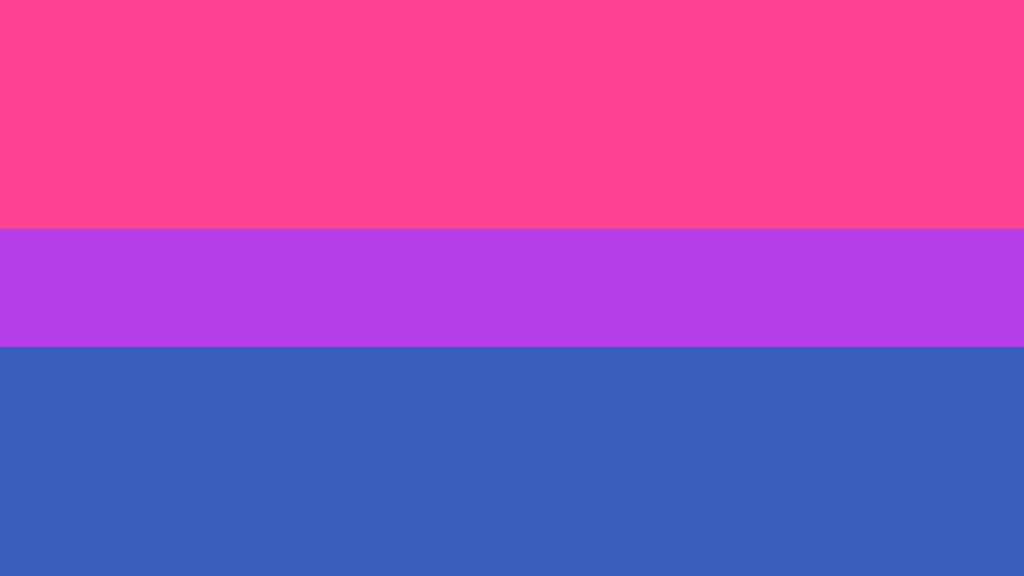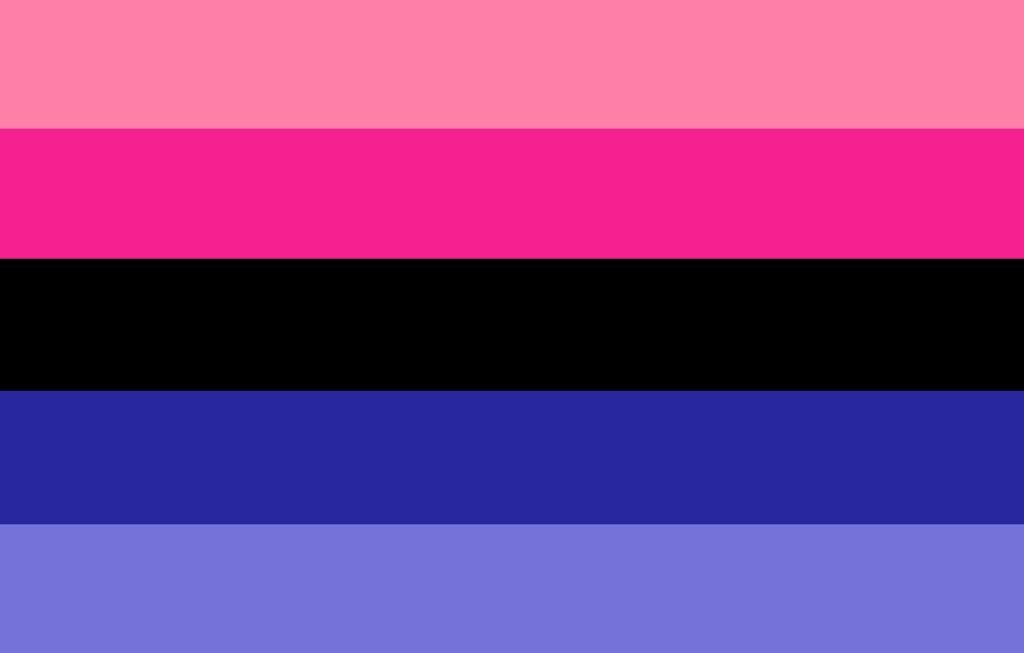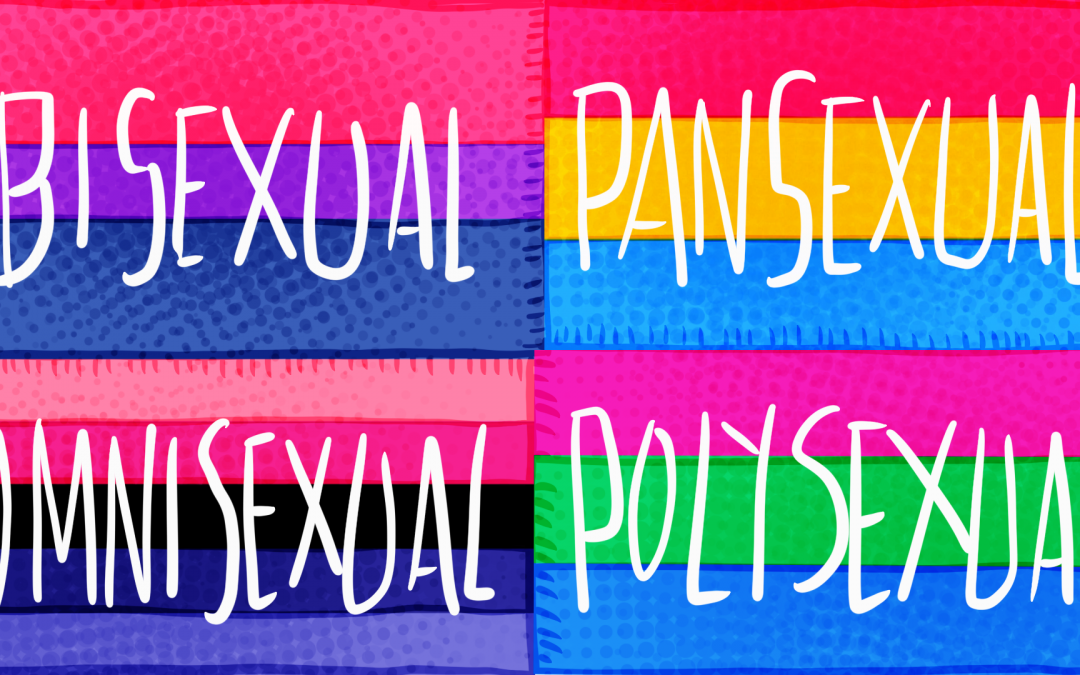In the culture I live in, we usually treat people as though they are straight and cisgender. But these labels are often incorrectly applied to people that they don’t actually fit—people who have different gender identities and different orientations.
A person’s orientation has to do with who they’re attracted to. This is distinct from gender identity, which is about a person’s sense of self.
There are a lot of different orientations. Some of them often get confused with each other—especially the ones that involve attraction to people beyond just one other gender.
Bisexual and pansexual are two of the more common orientations that involve attraction to multiple genders. There’s also omnisexual and polysexual, which you may not have even heard of until just now.
I’m going to cover all four of these in this post:
If you’re new to these labels, they can be confusing. I understand this confusion first hand. When I first came out, I used the word “bisexual” to describe myself, but it turns out pansexual more accurately describes me, and I didn’t learn that until later.
All these terms have some overlap with each other, but each also has its own distinctions. In this post, I break each one down to help demonstrate their differences.
Each of these words is just a label to describe an experience.
So if you’re trying to figure out which label “fits” you, don’t pressure yourself too hard. What’s more important is that you pay attention to what you experience, and give yourself room to experience it.
The labels are subordinate to the experience, not the other way around. The reason there are so many labels is because there are many different experiences. If a label doesn’t match your experience, that’s not a problem with you—that’s a problem with the label.
What is bisexual?

The prefix “bi” in the word bisexual comes from Latin, and it means “two.”
You may have heard bisexual described as someone who is equally attracted to women and men, or as someone who is attracted to both their own gender and a different gender.
While these are both ways to be bisexual, the word itself describes something more broad.
Bisexual describes a person who is attracted to people of two or more genders. This could include any set of genders.
A bisexual person could be attracted to women and men, men and agender people, women and feminine nonbinary people … you get the picture.
The thing that distinguishes bisexual people from pansexual people is that gender is a factor in their attraction (more on this in the pansexual section).
People of any gender can be bisexual.
This word is often shortened to just “bi.”
Because bisexual was the first of the terms on this page to come into being, it’s often used as an umbrella term to describe the community of everyone who experiences attraction to folks across multiple genders. It’s the “B” in LGBTQ.
When used as an umbrella term, you may sometimes see it as “bi+”.
What is pansexual?

The prefix “pan” in the word pansexual comes from Greek, and it means “all.”
A pansexual person can be attracted to anyone, regardless of their gender identity (or lack thereof).
This doesn’t mean they’re attracted to everyone. Pansexual people are attracted to people’s minds/souls, and gender is not a factor in their attraction. This is what distinguishes them from the others on this page.
People of any gender can be pansexual. I’m an example of a pansexual person, and I’m agender.
This word is often shortened to just “pan.”
What is omnisexual?

Omni is a Latin prefix that means “all.” Yes, “pan” means all, too. Hang in there—the distinction does make sense.
An omnisexual person can be attracted to people of any gender identity (or absence of gender identity), but unlike pansexual, gender is a factor in their attraction. It’s not regardless of gender, like pansexual. Gender itself is a contributor to an omnisexual person’s sense of attraction.
People of any gender can be omnisexual.
Since the bisexual label includes people who are attracted to two or more genders, there’s an overlap between the bisexual and omnisexual definitions, and some people identify with both labels. Omnisexual is just more specific, as it includes people who can be attracted to folks of all genders—and bisexual is more broad, since it extends that group to include people attracted to as few as two, or as many as all.
The word omnisexual is often shortened to just “omni.”
What is polysexual?

The prefix “poly” in polysexual comes from Greek, and means “many.”
A polysexual person finds people of many genders attractive, but not all genders. Like bisexual and omnisexual, gender is an attraction factor for polysexual people.
This orientation is distinct from pansexual and omnisexual, but some people may identify with both the bisexual and polysexual label simultaneously, since attraction to many genders is included in the “two or more” definition of bisexual.
Polysexual people may be of any gender identity.
This word is sometimes shortened to just “poly,” but that gets confusing, because “polyamorous” is often shortened that way, too. That’s why many polyamorous folks are beginning to use “polyam” to distinguish them.
***
And this has been my best attempt to break down the differences between the labels bisexual, pansexual, omnisexual, and polysexual. I hope you were able to follow along.
Is there information missing from this article? I’m always learning, too—so I welcome additional resources and context. Drop me a comment.
Related resources:

I think I’ll stick to fluid sexuality. That pretty much covers all of the above, and allows for change over time.
Hi Jemi, good for you for finding a term that resonates with you. I could never describe my experience of being pansexual as fluid in any way, so I don’t agree that it covers all of the above identities. But if it describes your experience, then hey, go you.
Why all the labels? Other animals don’t have this issue. Yes-we are animals too. Just be a human and be with whomever you wish. Who cares what the world thinks?
“Why all the labels” is exactly why these labels need to exist. People have a false label applied to them by default: that they are straight.
Read this post; it might help you understand. https://deconforming.com/gender-labels-fads/
god, this really helped me, thank u so much !!!!!!!
I’m a bit confused. I always thought of bisexual as attracted to no more than two genders….cause it’s BIsexual. But here it says that it means attracted to two or more genders…this is new information to me.
Apparently back then bisexual just meant two genders towards (i think) just cis women and men or just women and men because things like non-binary and genderqueer identities never really existed back then. So people wanted to reclaim the sexuality and make it..two or more genders for some reason (im not dissing or anything but in my opinion i think it would be easier to stick to two but of any two genders and not just male and female as to not have hate and discrimination towards poly, pan and omni in the community, but you do you i guess :p) But yeah, i dont really care wether or not people like more than two genders and identify as bi, its themselves, just always hated the discrimination and hate in the community thanks to that change. But i do hope that cleared up some info about why bisexuality is two or more genders 🙂 (really sorry if its not all correct but this is what i heard is all)
They changed it to more than two because the old definition was implying that non binary genders were excluded.
Nope! As a bisexual, I’m attracted to everyone. Historically bi has always meant more than 2. Try reading the Bisexual Manifesto.
Holy shit, thank you so much!!
I’ve been wondering for so long what the fuck I even was, but now I can actually know
I would now identify as Bi and Omnisexual
Thank you for the guide, it was extremely helpful to me!
Can you explain polysexual a bit more Im still confused about it
So I know I am not the only one wondering what am I. I grew up as a straight male (cisgender I believe it is called now) and as I have gotten older I do find myself being attracted to those who identify by other genders. I have had relations with Trans Females various times over the years and rather enjoy it and have connected with them on both a sexual and romantic level. That being said, I do no find males attractive in either aspect. So a bit confused and would love some insight and maybe conversation about this.
Polyam person here. We are not shifting from poly to polyam as a shortening because of polysexual people. The reason is much more, that polynesian people also use poly as their term and we don’t want to take it from them.
Just like non-binary people use enby instead of nb (which stands for non-black poc).
I’m going to sound pedantic but you missed skoliosexual.
If someone is skoliosexual, they are attracted to people who are not cisgender.
I don’t mean this to be mean. This article was really helpful.
Hey there. Thank you so much!!! Your explanation is the first one that actually helped me instead of confusing me even more. You were really clear and now my doughs are over!!!!! Thanks again, u really helped.
I’m still very confused about my sexuality.. So I first liked the opposite sex as me then I was on the internet and I think I’m in love with two people. They were both girls but one is transgender and the other is non-binary so at this point, I’m so so so confused and I think I’m LGBTQ+ because it doesn’t feel right when I say I’m straight so.. What am I..? Can somebody please help me out?